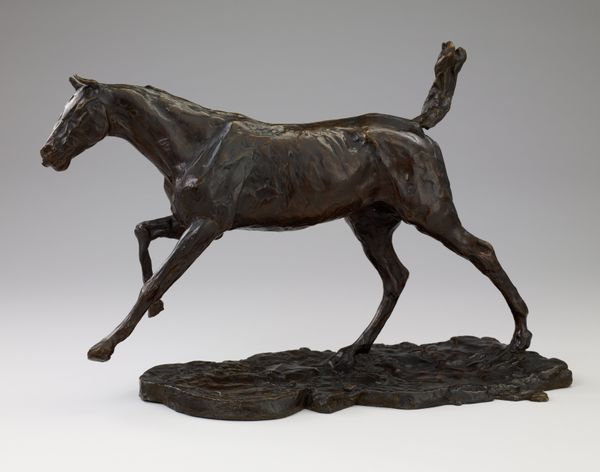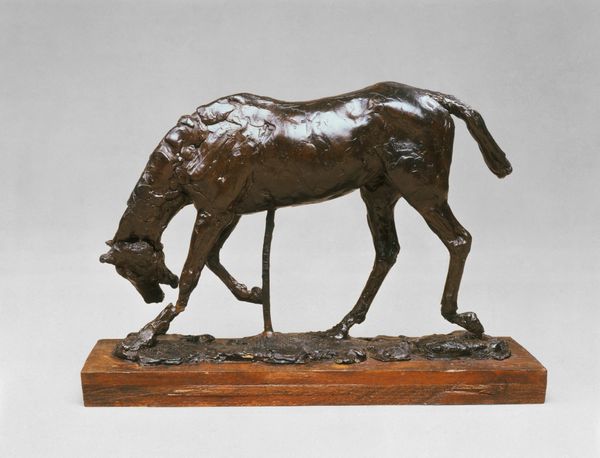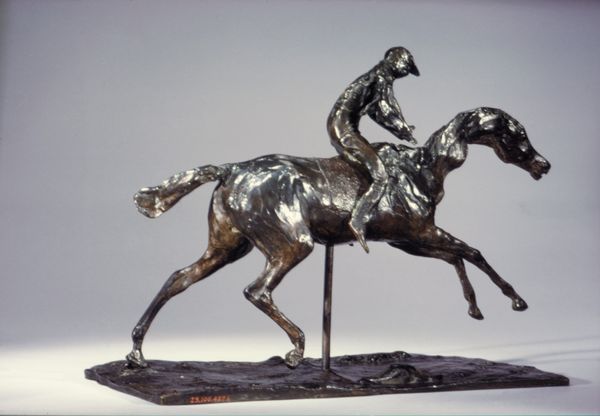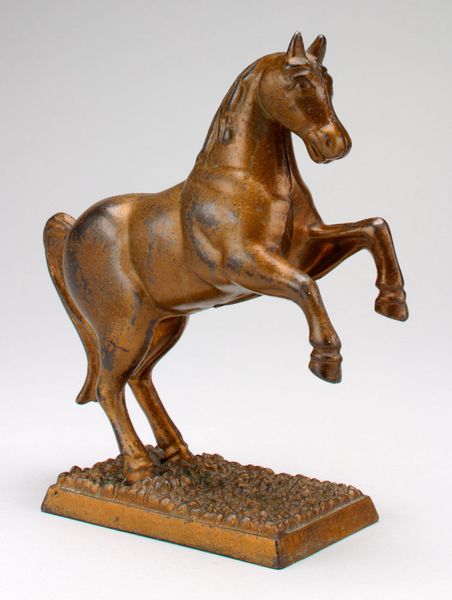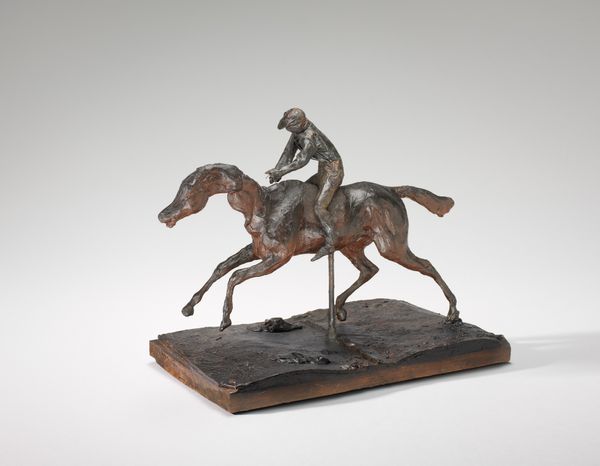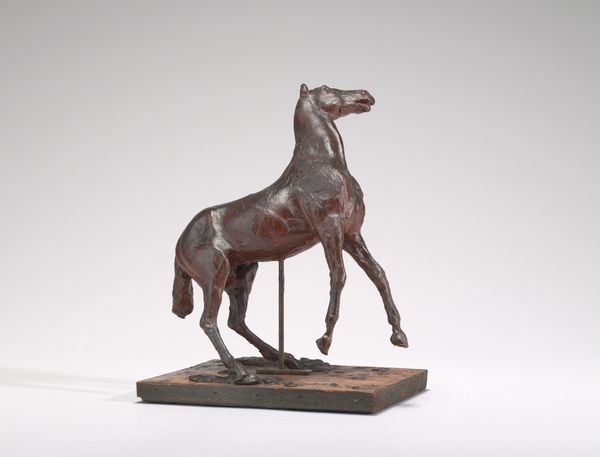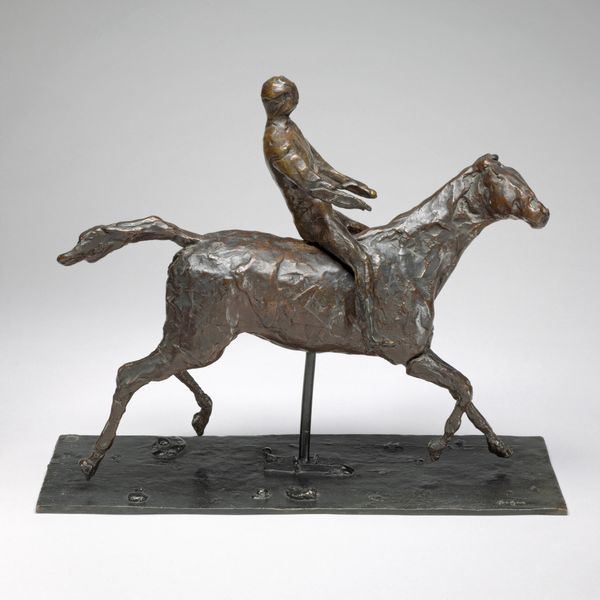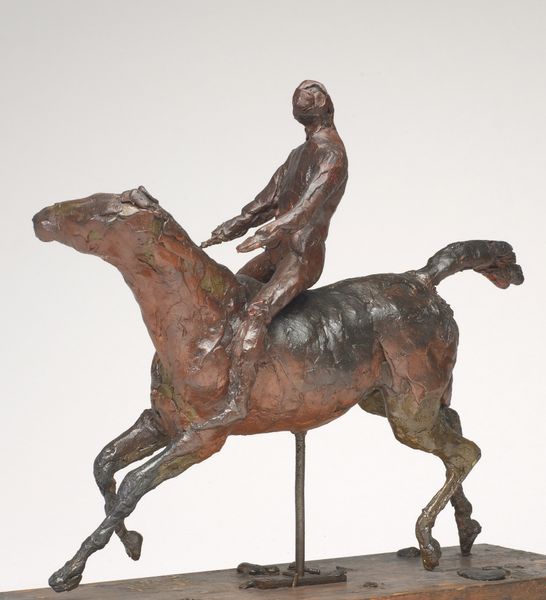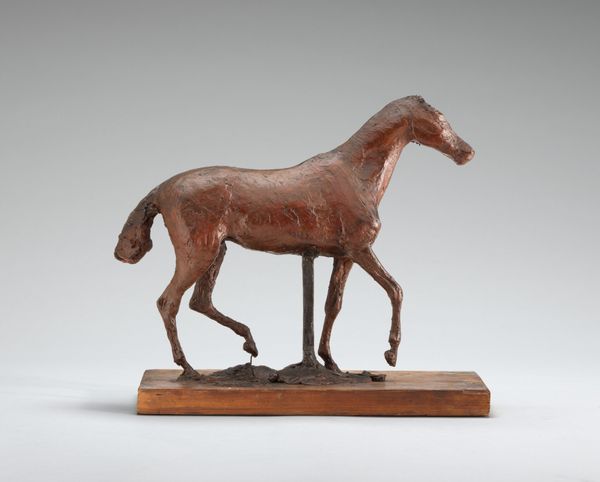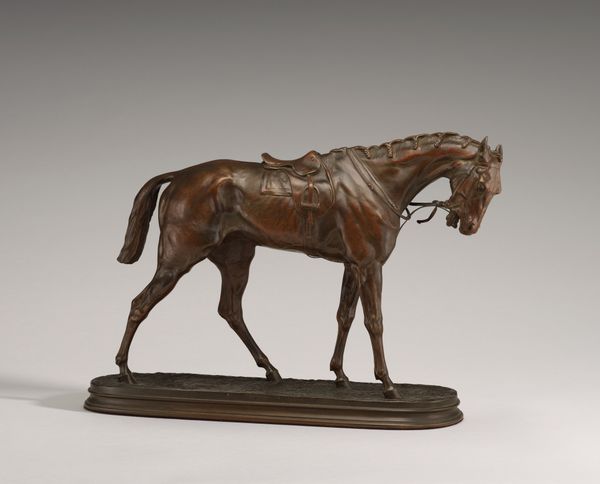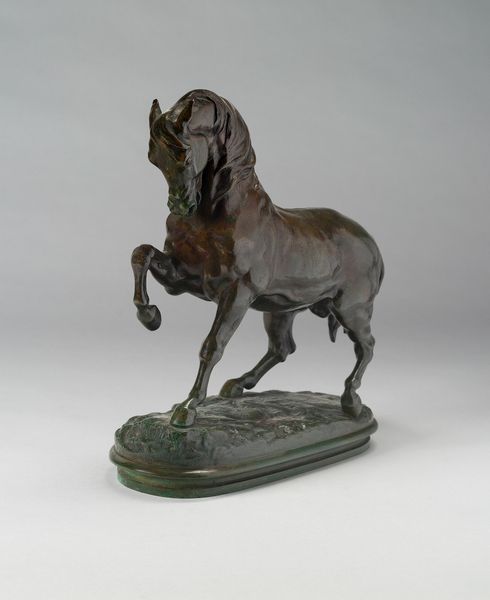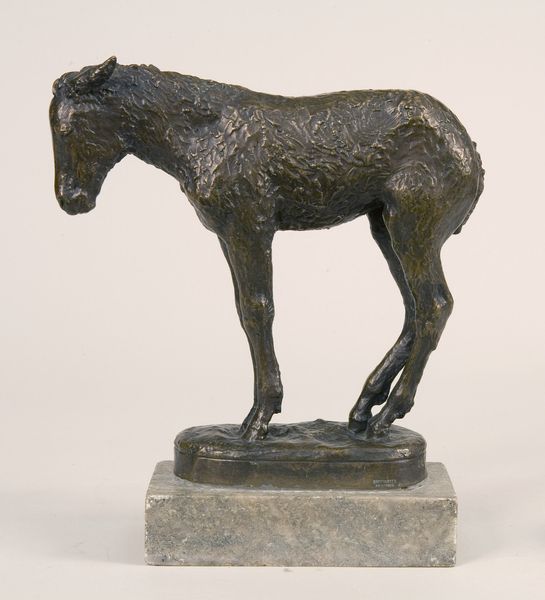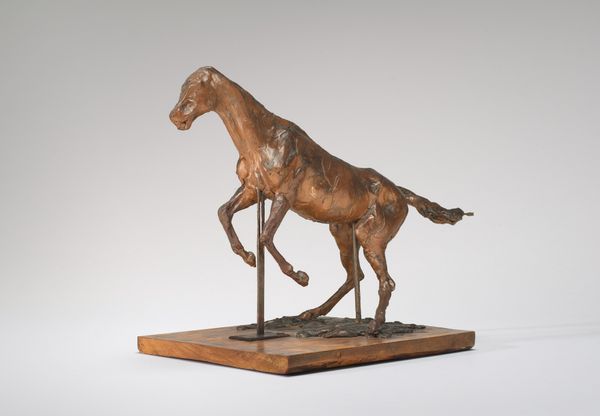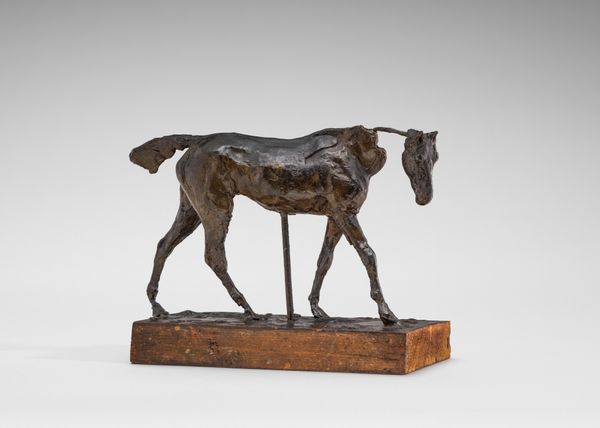
bronze, sculpture
#
animal
#
impressionism
#
sculpture
#
bronze
#
figuration
#
sculpture
Dimensions: overall without base: 31.8 x 22.5 x 43 cm (12 1/2 x 8 7/8 x 16 15/16 in.) height without base (of horse): 30.3 cm (11 15/16 in.)
Copyright: National Gallery of Art: CC0 1.0
Editor: Here we have Edgar Degas's bronze sculpture, "Horse Galloping on the Right Foot," created around the late 1880s. The texture of the bronze is striking, you can practically feel the energy of the horse leaping forward. What can you tell us about it? Curator: It’s a brilliant example of Degas challenging the established academic traditions of sculpture. Think about the Paris Salon at the time. Sculptures were often idealized, static. Degas, influenced by the advent of photography, sought to capture movement, a fleeting moment in time. How do you think his social circles would have perceived this choice to portray a contemporary subject, the racehorse? Editor: Well, given that he was associated with the Impressionists, who were often criticized, I imagine it was pretty radical. It wasn't a mythological figure or historical scene; it was everyday life. Curator: Exactly. The sculpture is also rooted in the rapidly changing Parisian social landscape. Horse racing was becoming a popular spectacle, a site of both leisure and social mixing across different classes. So this piece wasn't just about depicting a horse; it was capturing a modern phenomenon. Consider, too, how this could reflect evolving attitudes toward labor, the spectacle of speed, and the very notion of progress during the Belle Époque. What strikes you most about Degas' technique? Editor: The visible marks of his hand; it feels immediate and raw. Not polished or refined, which emphasizes that sense of motion and capturing a split-second view. Curator: Precisely. And that ties into Impressionism's broader interest in capturing subjective perception rather than objective reality. It highlights the artist's hand, democratizing the artistic process itself. Editor: That really changes how I see it, realizing that the choice of subject and the raw execution are both making a statement. I initially just saw the horse; now, I see so much more. Curator: It's amazing how situating art within its social and cultural moment allows us to peel back the layers of meaning, isn’t it?
Comments
No comments
Be the first to comment and join the conversation on the ultimate creative platform.
